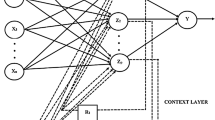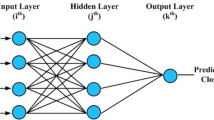Abstract
Taiwan stock market trend is fast changing. It is affected by not only the individual investors and the three major institutional investors, but also impacted by domestic political and economic situations. Therefore, to precisely grasp the stock market movement, one must build a perfect stock forecast model. In this article, we used a multi-stage optimized stock forecast model to grasp the changing trend of the stock market. First, data of 2 stocks, TSMC and UMC were collected, and then inputted the test data into the genetic programing and built a model to find out the arithmetic expressions. Artificial Fish Swarm Algorithm is used to dynamically adjust the variable factors and constant factors in the arithmetic expressions. Next, we took the error term (ε) in arithmetic expressions to Gray Model Neural Network to make the forecast. Finally, we used the Artificial Fish Swarm Algorithm to dynamically adjust the parameters of the Gray Model Neural Network to enhance the precision of the stock forecast model as a whole. The result showed that the forecast capability of each stage after the optimization process is better than that of its previous stage, and the mixed stock forecast model (GP–AFSA+GMNN–AFSA) in stage 4 greatly enhanced the precision of the forecast.








Similar content being viewed by others
References
Tay FEH, Chong TY, Lee FC (2002) Pattern nesting on irregular-shaped stock using Genetic Algorithms. Eng Appl Artif Intell 15(6):551–558
Qian B, Rasheed K (2007) Stock market prediction with multiple classifiers. Appl Intell 26(1):25–33
Jabeen H, Baig AR (2010) A framework for optimization of genetic programming evolved classifier expressions using particle swarm optimization. In: HAIS 2010: Hybrid Artificial Intelligence Systems, 5th International Conference, pp 56–63
Jabeen H, Baig AR (2010) Particle swarm optimization based tuning of genetic programming evolved classifier expressions. In: NICSO, pp 385–397
Li HL, Shao JJ, Chien JH (2002) Optimization pattern based on animal behaviour: fish group algorithm. Syst Eng Theory Pract 22(11):32–38
Deng J (1982) The control problems of grey system. Syst Control Lett 5:288–294
Koza JR (1992) Genetic programming: on the programming of computers by means of natural selection. MIT Press, Cambridge. ISBN: 0-262-11170-5
Koza JR (1992) Genetic programming II: automatic discovery of reusable programs. MIT Press, Cambridge
Holland J (1975) Adaptation in natural and artificial systems. University of Michigan Press, Ann Arbor
Babu BV, Karthik S (2007) Genetic programing for symbolic regression of chemical process systems. Eng Lett 14(2):42–55
Pai PF, Lin CS (2005) A hybrid ARIMA and support vector machines model in stock price forecasting. Omega 33:497–505
Eberhart RC, Kennedy J (1995) New optimizer using particle swarm theory. In: Proceedings of sixth international symposium on Nagoya, Japan, pp 39–43
Teodorovic D, Lucic P, Markovic G, Dell’Orco M (2006) Bee colony optimization: principles and applications. In: Proceedings of the eight seminar on neural network applications in electrical engineering, pp 151–156
Teodorovic D (2008) Swarm intelligence systems for transportation engineering: principle and application. Transp Res C 16:651–667
Teodorovic D, Dell’Orco M (2008) Mitigating traffic congestion: solving the ride-matching problem by bee colony optimization. Transp Plan Technol 31:135–152
Shi F (2010) Matlab neural network 30 case analysis. Beihang University Press, Beijing
Author information
Authors and Affiliations
Corresponding author
Rights and permissions
About this article
Cite this article
Huang, CJ., Chen, PW. & Pan, WT. Using multi-stage data mining technique to build forecast model for Taiwan stocks. Neural Comput & Applic 21, 2057–2063 (2012). https://doi.org/10.1007/s00521-011-0628-0
Received:
Accepted:
Published:
Issue Date:
DOI: https://doi.org/10.1007/s00521-011-0628-0




